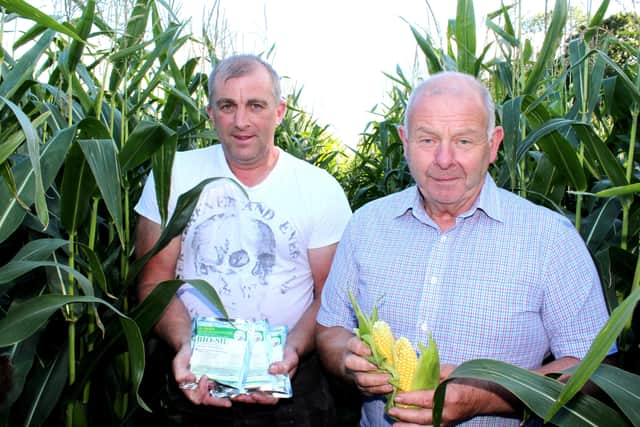Planning for a high dry matter maize harvest
and live on Freeview channel 276
Hopefully, the weather will continue to be kind when they are being harvested. To date, 2022 has been a very challenging year for maize growers depending on their location.
Some areas have received only 50% of their average rainfall in July and early August while others have ‘enjoyed’ almost normal levels of precipitation.
Advertisement
Advertisement
This has produced a range of different maize crop types. In drier areas crops may have suffered from the drought stress, thereby reducing yields, whilst in other areas crops are looking better than ever.


In all cases, the expected dry matters are higher than might have been expected. To make the most of what is available, growers need to plan the harvest very carefully.
So what are the potential pitfalls for this year’s maize harvest?
In summary it’s a list of do’s and don’ts, and in particular a list of don’ts: don’t cut too early; don’t chop too long; don’t skimp on compaction and don’t overlook the power of a good inoculant
Advertisement
Advertisement
The temptation to cut early is a strong one. A significant number of farmers may well be staring at a gap in their forage stocks where that grass should be.
No doubt, they are thinking that the maize should be filling that space. Whilst the crop is lush and green the temptation is to take the maximum volume.
However, waiting means that the leaves begin to die, the stem hardens off and the volume reduces. In other words there is less silage material to fill the hungry tummies.
So why not cut the crop early?
Well mostly it’s down to preserving nutrient levels. As the crop matures (or dies off) the nutrients in the leaves and stem are transferred to the cob; so they are not lost.
Advertisement
Advertisement
Cut too early and growers increase the risk of effluent run off. This is a pollution risk but more importantly effluent is full of feed value, leaching out of the silage and lost to the livestock.
To maximise the feed value and optimise forage quantities, growers would be better swerved to cut later and incorporate some straw into the ration to fill the space.
Choosing the correct chop length with high dry matter silage is super important.
There is a simple rule-of-thumb to be followed in this context: the higher the dry matter the shorter the chop length. This approach acts to maximise the nutritive value of the silage at feed-out it and the more value it will be to your cattle.
Advertisement
Advertisement
It may be tempting to choose a longer chop length, in order to give the cattle something to chew on.
But this principle does not hold up, where higher dry matter forages are concerned. Forages of this type are more difficult to compact and consolidate. This makes the silage face more permeable to oxygen.
High dry matter maize silage is at high risk of aerobic losses. Aerobic losses in the silage face can be a much as 40% of the total feed value.
These are losses that won’t be seen and losses that you can ill afford, particularly in a year of forage shortage.
Advertisement
Advertisement
Choosing the correct chop length together with good compaction and consolidation will reduce the aerobic permeability of the silage.
So how does a good inoculant help in reducing silage losses?
Many farmers are aware that a good silage inoculant can help make better silage. But what exactly is it doing and how can it help in high dry matter maize silage?
Firstly it’s important to exclude the perception that inoculants are only used when making silage in poor conditions.
Advertisement
Advertisement
Inoculants can only preserve the feed value in the crop, making the most of what is already there. That’s exactly what farmers need to do when making a high-risk maize silage in a year of forage shortages.
The lactobacillus planetarium in BioSil® are specifically chosen to rapidly turn sugars into lactic acid, rapidly reducing the crop pH, creating conditions where other undesirable micro organisms can no longer prosper.
And that’s the key to preserving the silage – this speed of fermentation. The longer it takes to “make” silage, the more of these aerobic microbes will be establishing populations. These populations will be rendered inactive as the pH drops but they will spark back into life as soon as the silage is uncovered and oxygen is reintroduced.
As the 2022 forage maize season approaches, the following principles should be adopted: harvest when the crop is properly mature with dry matters in the 28%-35% range. Choose an appropriate chop length, between 20mm for 28% DM and 10mm for 35% dry matter.
Advertisement
Advertisement
Consolidate and compact carefully: use a compactor if available. Use BioSil® silage inoculate to preserve the feed value of maize. And, finally, consider adding straw into the ration if feed stocks are short.
For further information, contact Frank Foster on 07841 954328.